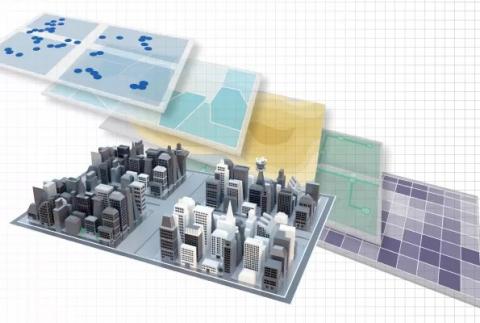GIS Certification

The Geographical Information Science Certificate Program is a structured interdisciplinary Certificate Program offered through the School of Geosciences. This program will provide its students with the training and experience necessary to compete and work in the GIS arena in both public and private sectors.
Admission Criteria
Current students taking or who have taken the initial GIS courses will receive priority admission to the Certificate Program. Students will qualify for admission to the certificate by maintaining good standing in a cooperating department and completing an application specific to the GIS Certificate. Perspective students must complete the prerequisites listed for the Level One Required course, or pass a proficiency test.
Model Curricula
A minimum of 13 (maximum 15), ENVS455(G) or above level credit hours consisting of four required (ENVS 464G, ENVS 473G and ENVS 487G; three credit hours each) plus a Capstone Seminar (1 to 3 credit hours) is required to complete the GIS Certificate.
Of the four required courses, one Level 1 course and three Level 2 courses must be taken. The G classification on the course numbering system allows for graduate level credit to be awarded for these courses. Extra course work is required of graduate level students.
Courses that will comprise the Certificate curriculum, associated Learning Outcomes, are listed below. Required courses may be cross-listed between participating departments and taught in some instances by 'teams' comprised of tenure and tenure-track faculty with post-docs or adjunct faculty..
LEVEL ONE: REQUIRED COURSE
| Course | Title | Credit Hours |
| ENVS 455G |
Geographic Information Science I. (2,2,3) GIS theory and methodology, practical GIS software skills, and basic scientific computing skills, map development and basic photo interpretation. Prereq. Basic Computer literacy in micro-computers. Fa |
3 |
LEVEL TWO: REQUIRED COURSES
| Course | Title | Credit Hours |
| ENVS 464G |
Geographic Information Science II. (2,2,3) Emphasis on practical problem solving utilizing GIS applications, advanced GIS software skills, and basic scientific computing for addressing natural disaster and emergency response issues. Prereq. ENVS455G. Sp |
3 |
| ENVS 473G |
Remote Sensing in GIS. (2,2,3) Emphasis on practical Remote Sensing applications. Introduces Remote Sensing and analysis based on aerial photography and satellite imagery, applying this technology for analyzing spatial-related issues, in a variety of sciences and fields of study. Offering introductory RS software skills, basic scientific image interpretation and principles of Photogrammetry and programming skills in processing RS data. Fa |
3 |
| ENVS 487G |
Advanced GIS Analysis and Applications. (2,2,3) Advanced course in GIS and Remote Sensing applications. GIS is used as a tool for analyzing spatial-related issues, in a variety of sciences, fields of study and disciplines. Prereq. ENVS464G and ENVS473G. Sp |
3 |
| ENVS 494G |
GIS Capstone Seminar (Independent Study). (1-3) Practical Application of GIS technology to address a spatial problem more effectively within the students chosen field of study. Prereq. ENVS487G. Fa. |
1-3 |
Capstone Seminar Course
Students will present a GIS project to the GIS Certificate Working Committee. All students will be responsible for demonstrating how GIS technology has enabled them to address a spatial problem more effectively within their chosen field of study.
This independent study, utilizing skills obtained in GIS and remote sensing, is to be coordinated within each student’s graduating department or participating agency and a proposal submitted to the GIS Certificate Working Committee.
This course completes the GIS course core curriculum in the School of Geosciences at UL Lafayette
Completing the GIS Certificate Program
To receive the GIS Certificate, students must first satisfy all program requirements by successfully completing the required courses. Upon completion, students must fill out the GIS Completion Form and obtain the necessary signatures from both the Coordinator of the GIS Certificate Program and the unit head of the department in which they are enrolled.
When the application for graduation opens, students will see both programs listed. They should first select their primary program, complete the graduation application process, and submit it. Afterwards, students may return to the “Apply to Graduate” section, select the GIS Certificate program, complete the process, and submit the application.
Both associated fees ($90 and $20) will be posted to the student’s Statement of Account on ULink. If students encounter any difficulties when submitting the second application, they may contact graduation@louisiana.edu for assistance.
